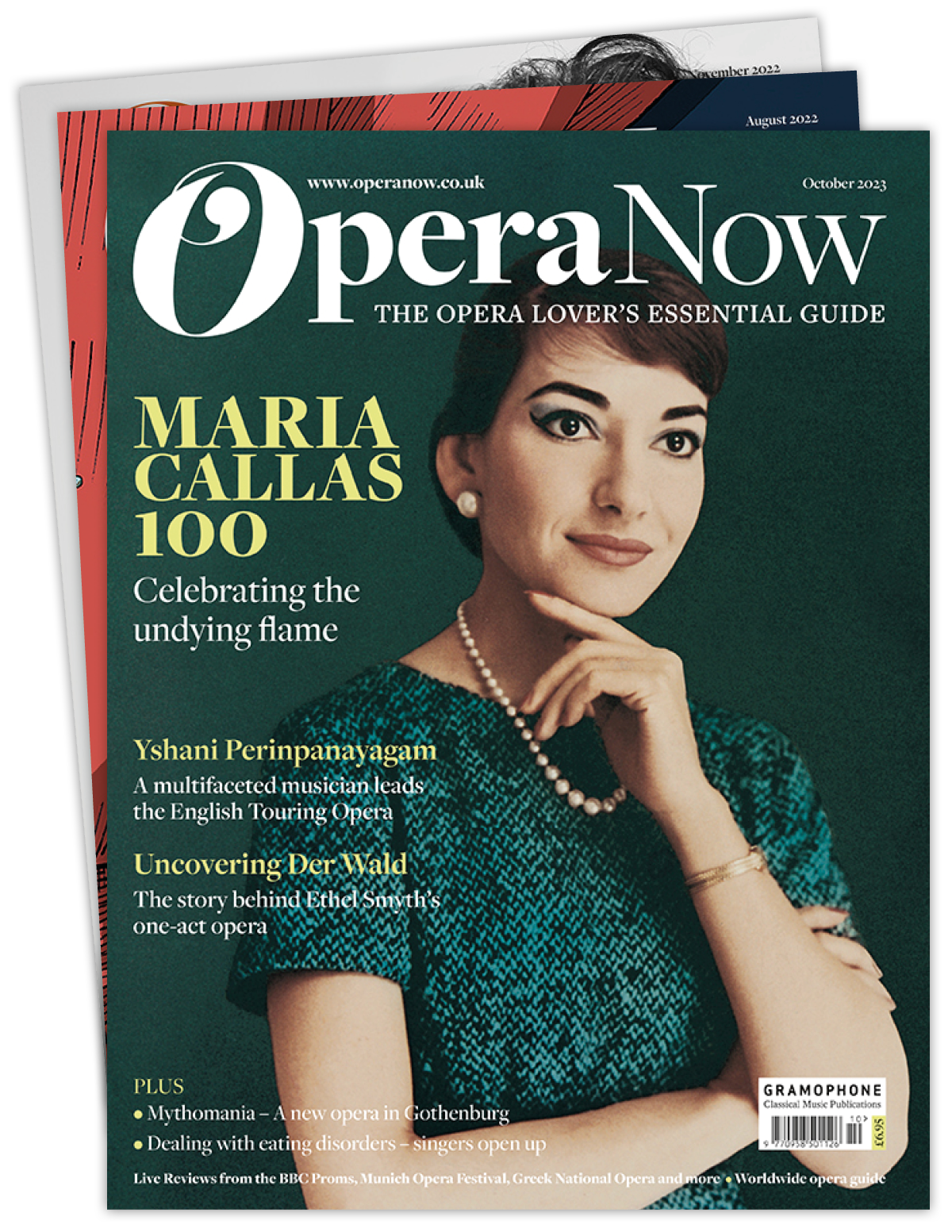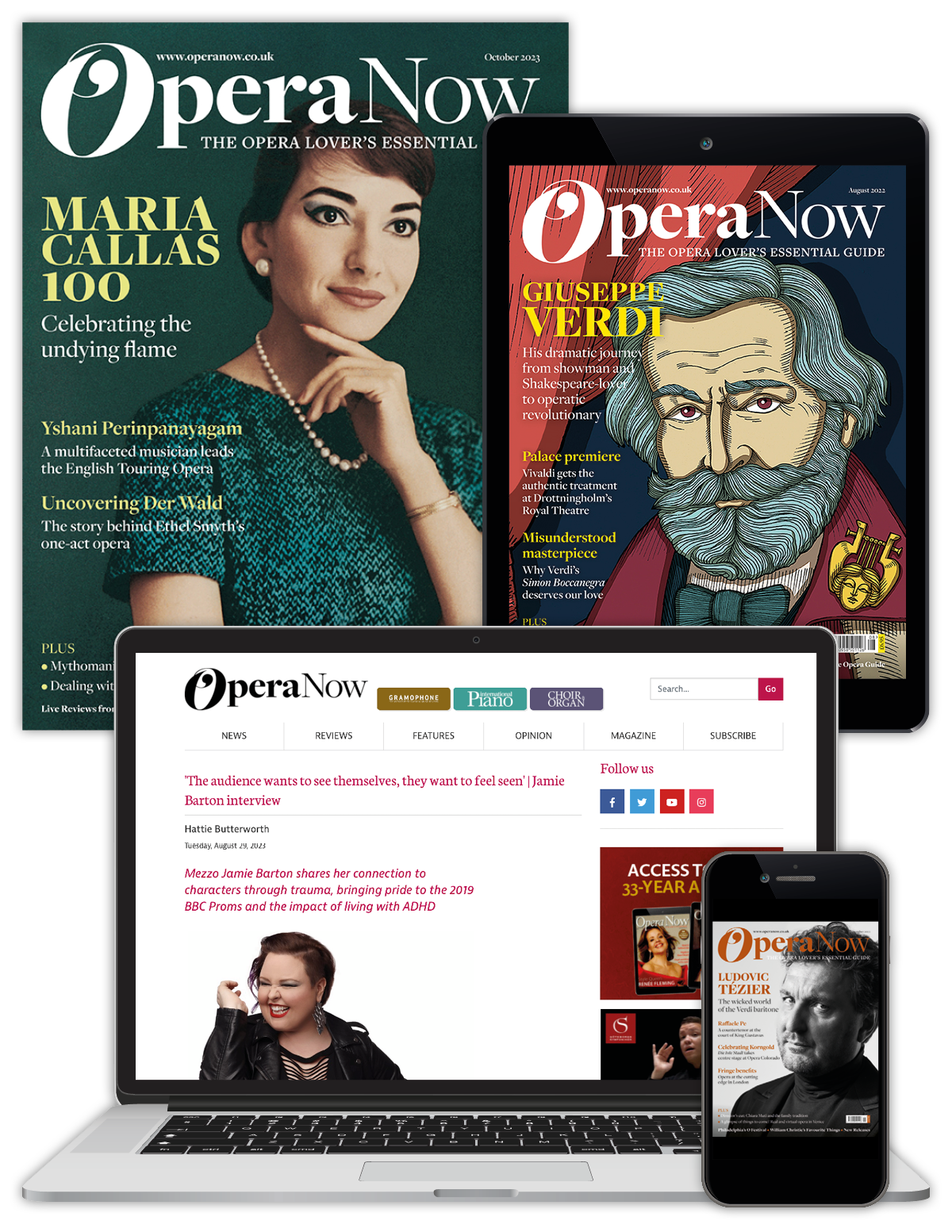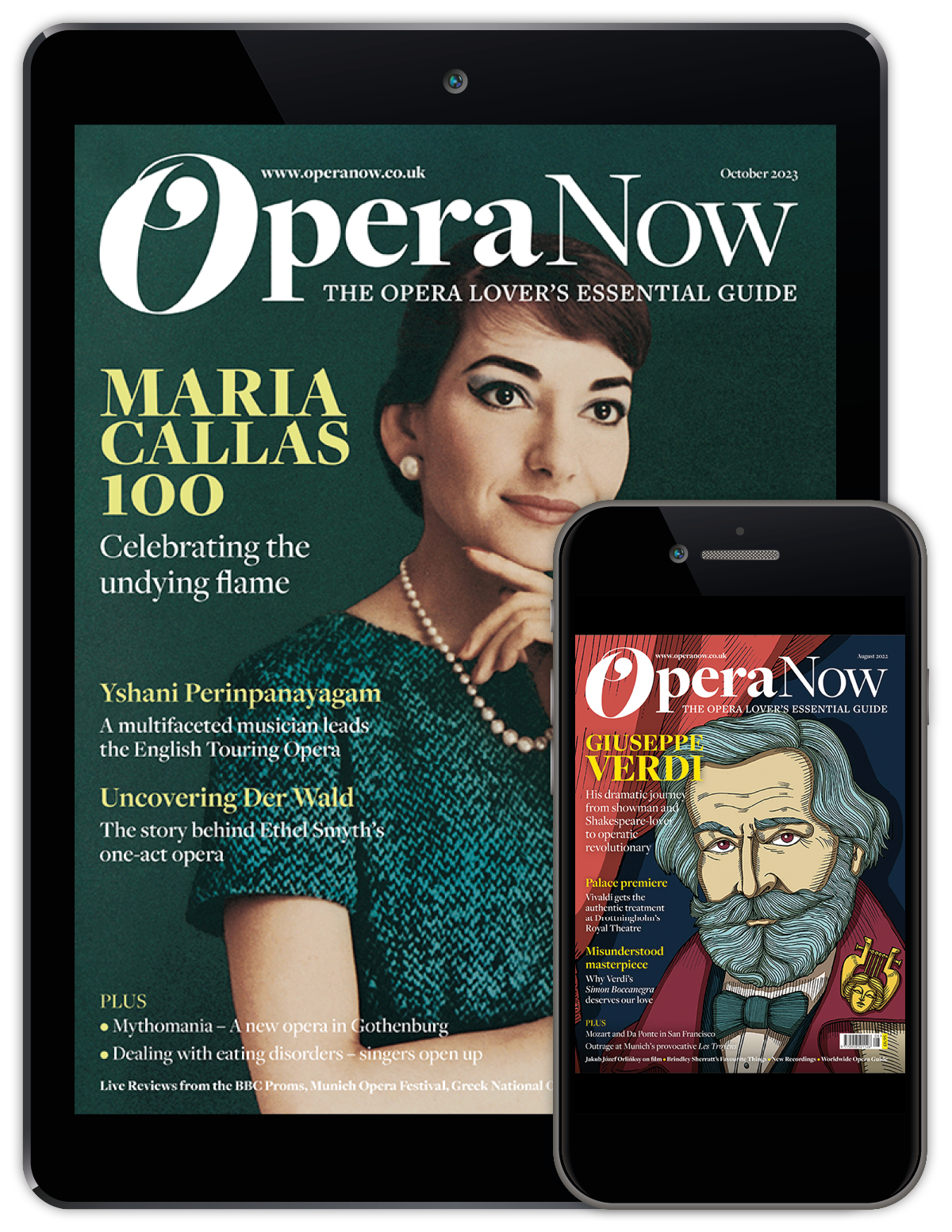John Adams and the creation of Antony and Cleopatra
Thomas May
Friday, September 2, 2022
Five years and a pandemic after his last work for the stage, John Adams returns to opera with the Shakespeare-inspired Antony and Cleopatra, commissioned by San Francisco Opera and receiving its world premiere there this month
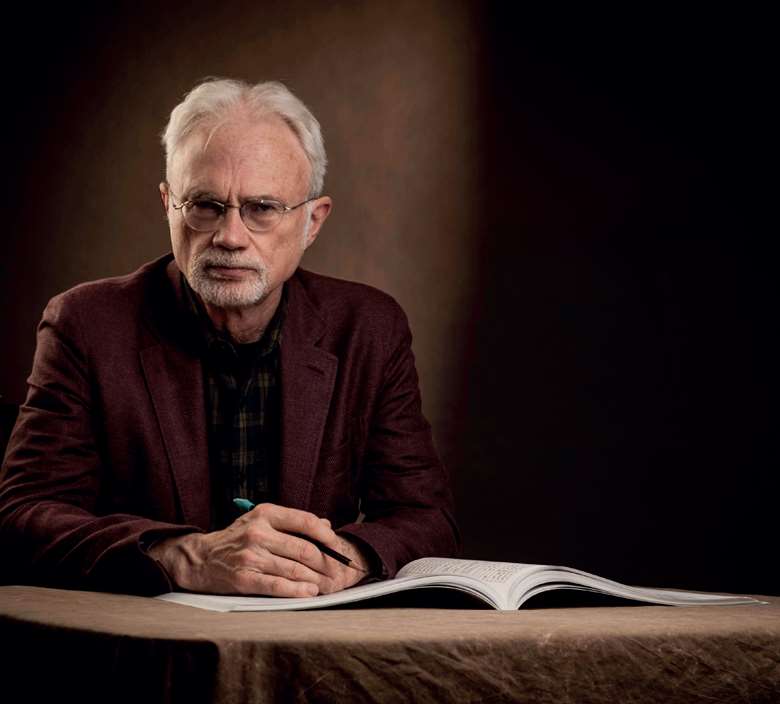
VERN EVANS
Good luck trying to anticipate which path John Adams is going to follow next. Despite the eminent status he has achieved as an elder statesman of contemporary music, his unrelenting drive to take new risks makes him among the least predictable of composers at work today.
News that he had chosen Antony and Cleopatra as the subject for his next opera caught many by surprise. The world premiere in September, prominently scheduled to open San Francisco Opera's centenary season, promises still more surprises for anyone who has followed Adams’ development as an artist. Over a lunch interview in midsummer, he explained that he deems Antony and Cleopatra to be ‘a very different piece of music theatre’ in comparison with his previous works. ‘There are hardly any big stand-alone arias, very little soliloquy or asides.’ Overall, the result is a ‘real sung play, where people are relating to each other all the time.’ Adams says Debussy's Pelléas et Mélisande was his model for this approach, ‘though not in any way musically.’
Shakespeare is, of course, hardly an unusual source for composers. But Adams has developed a reputation for marshalling the power of opera to illuminate dramatic turning-points in the modern world, particularly as they have impinged on the American psyche. His themes, the composer has said, come largely from his ‘personal engagement with contemporary life’.

Amina Edris, absolutely fearless in the role of Cleopatra

Elkhanah Pulitzer: finding parallels between modern-day celebrity and the totemic figures of ancient history

Gerald Finley, whose voice Adams had in his mind while creating the role of Antony
Girls of the Golden West in 2017, his previous San Francisco Opera commission, stepped back a bit further to the 1850s, but its exposure of the violence, racism and brutality lurking beneath the romantic myth of the California Gold Rush felt provocatively contemporary. It also gave him an opportunity to set some monologues from Macbeth as part of a show within the show.
‘Antony and Cleopatra is a play that I always kept returning to,’ Adams says. ‘Probably I was drawn, first of all, to the relationship between the two, because it seems so absolutely real and modern. They're not idealised lovers. And each of them has a past. It's a mature love story, with scorching scenes.’ He refers to Harold Bloom's monumental study The Invention of the Human, which credits Shakespeare with shaping the modern understanding of individual identity and psychology.
Along with the intimate love tragedy at its heart, the epic collision of world-views that Shakespeare stages in Antony and Cleopatra makes it ‘a very modern story,’ as Adams sees it: ‘Rome represents this juggernaut of technological and political savvy against a Cleopatra who was fighting to basically save her civilisation, which is in decline.’ Another of the Shakespeare scholars that Adams profited from studying, Northrop Frye, observed in the last quarter of the 20th century: ‘It's amazing how vividly Shakespeare has imagined a world so much more like ours than like his’.
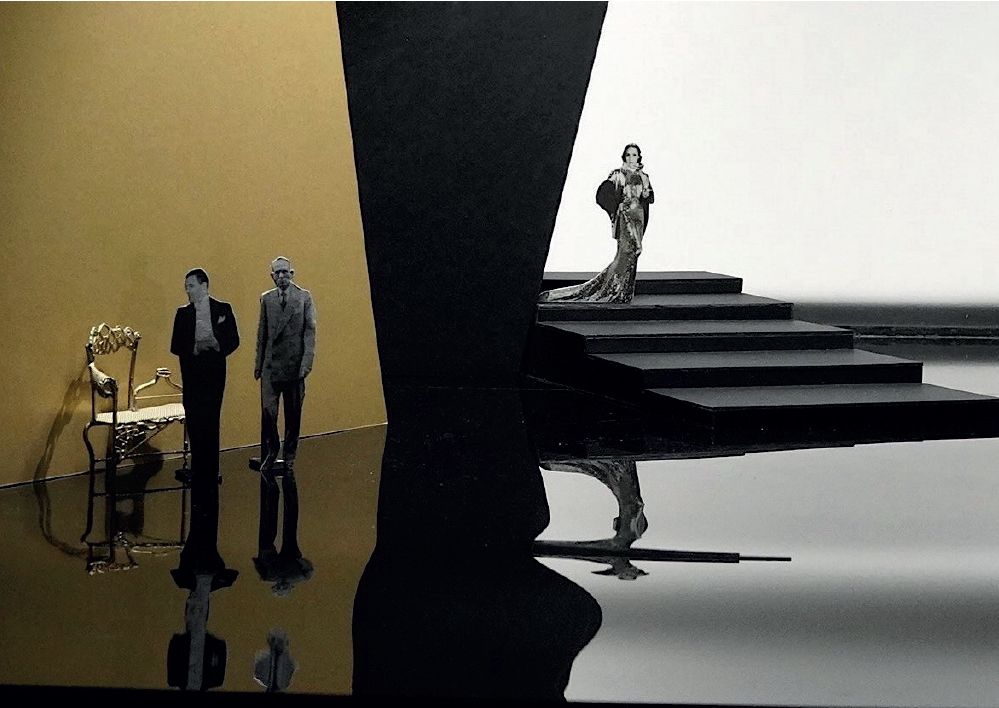
The opera is set in a stylised Ancient Egypt via the golden age of Hollywood. Design by Mimi Lien © CHESHIRE ISAACS
These connections are enhanced by the vision of director Elkhanah Pulitzer and the design team. ‘I was really interested in how our own relationship to creating gods in the modern day - Hollywood on the big screen - parallels mightily the totemic iconography of ancient Egypt and also the rise of the Roman Empire.’
That doesn't mean ‘updating’ the production, which is set in 31-30 BCE, the original historical context. But Pulitzer plans to overlay this fundamental layer with a visual gloss that links to modern times. Projection designer and filmmaker Bill Morrison will prepare archival footage of tourists in the Middle East in the 1920s and ‘30s and Fascist Italy for a sequence of ‘newsreels’ that recap major events such as the pivotal Battle of Actium that seals the fate of Antony and Cleopatra midway through the opera.
This neo-Brechtian technique is meant to provide a modern visual analogue for the propaganda tools that the ancient Romans and Egyptians would use to get their messages across to the people. The production will dramatise the ‘binary’ of public persona versus the private lives beneath, Pulitzer explains, to clarify ‘the deeper, personal questions of how all those levers are putting pressure on and creating doubt for our leads’ as they encounter ‘a great deal of pain and struggle and loss’. Other inspirations she mentions are classic screwball comedies with their ‘super-smart tongue-in-cheek banter’ and the work of Hollywood golden age legends Busby Berkeley and Cedric Gibbons.

Costume designs for Antony and Cleopatra by Constance Hoffman © SIM CANNETY-CLARKE
Pulitzer's contributions make this the first of Adams’ nine stage works not to have been originally staged by his longtime collaborator Peter Sellars. ‘I thought it would be really interesting to work with a woman for a change - particularly on the subject of Cleopatra,’ says Adams about changing tack. He adds that he has gained important insights from consulting with Pulitzer and dramaturg Lucia Scheckner as he was creating the libretto.
Similarly, Adams’ libretto for the most part moves away from the collage technique that Sellars had developed for four of his stage works. The libretto for Girls of the Golden West, for example, was woven entirely from miscellaneous sources contemporary to the Gold Rush era. Because Antony and Cleopatra is particularly lavish, indeed proto-cinematic, in its range of settings and characters, Adams naturally had to pare the original down significantly. He streamlined the complex narrative into two acts and a total of nine scenes, with the focus primarily on Antony, Cleopatra and Octavius Caesar.
Sometimes this called for reassigning particular lines to different characters and scenes. ‘I really wanted it to be about these people and their power struggle,’ he says.
But Adams also interpolated lines from elsewhere in Shakespeare - The Taming of the Shrew for the opening scene, in which we first encounter Antony in a drunken stupor - and he resorted to a bit of the collage technique for a scene in the second act in which Caesar gives a speech proclaiming Roman dominance. ‘Interestingly, there was nothing in the play for Caesar of the breadth I needed, so I took that from Book VI of Virgil's Aeneid,’ he says (adapting John Dryden's translation).
The role of Cleopatra makes extreme demands, both in sheer length and in her dramatically meandering range - a musical embodiment of her mercurial personality. Adams wrote the part for Julia Bullock, who created Dame Shirley in Girls of the Golden West. When it was announced during the summer that she had to withdraw owing to the expected birth of her first child, the soprano Amina Edris was cast to take her place. ‘She's absolutely fearless,’ says Adams.
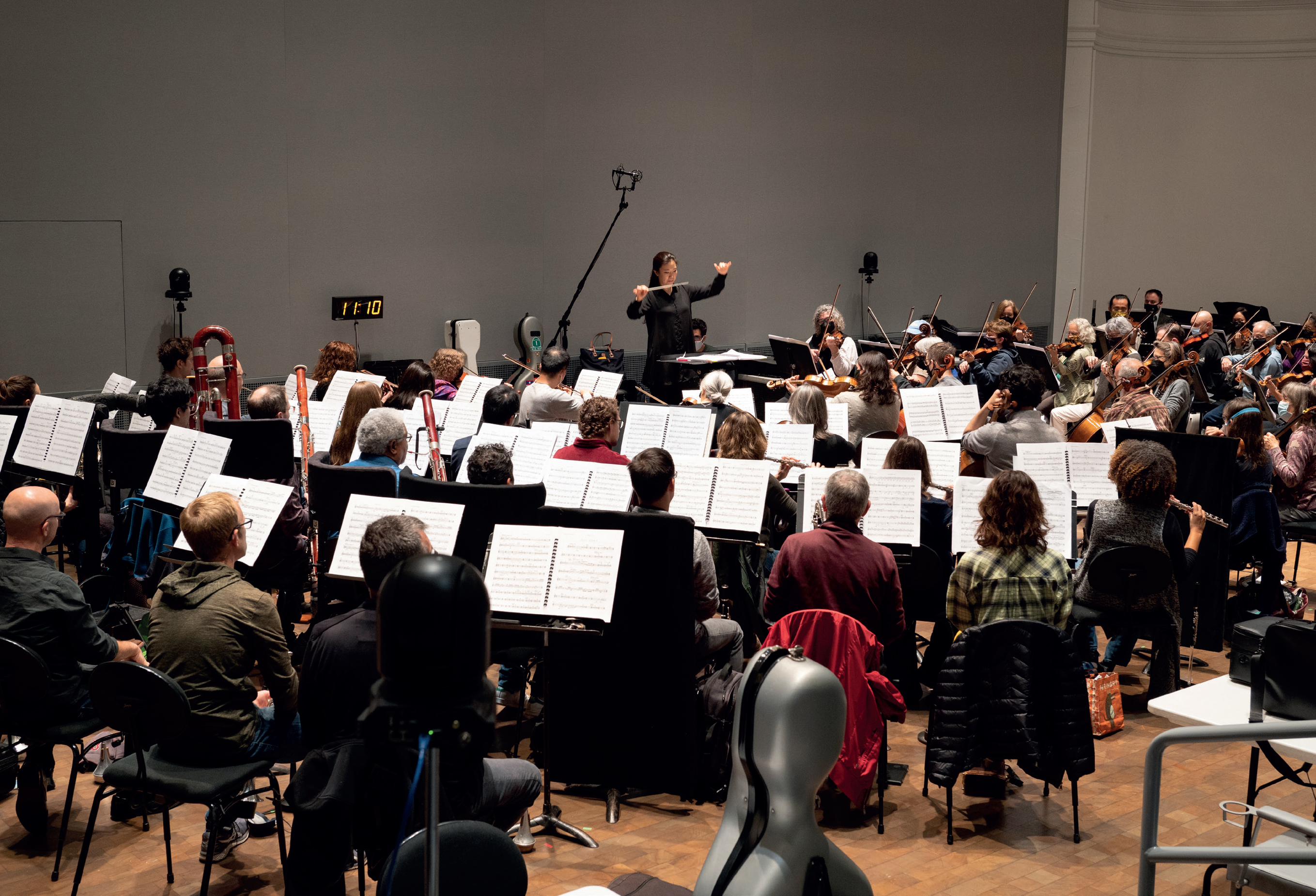
San Francisco Opera's director of music Eun Sun Kim leads an early orchestral read-through of Adams’ new score © KRISTEN LOKEN
To portray the contradictions of Antony - ‘once a brilliant soldier in his prime, who is not in his prime anymore and just wants to retire and have a good time but is sucked back into the maelstrom of Roman politics’ - Adams had in mind the sound of bassbaritone Gerald Finley, who created the protagonist scientist in Doctor Atomic. The composer notes that Shakespeare's critical treatment of Caesar (tenor Paul Appleby, the original Joe Cannon in Girls of the Golden West) made the play especially attractive. ‘He's much younger, and he's always on message. He reminds me of this young generation of Silicon Valley masters of the universe.’
Adams’ response to Shakespeare's language is reflected by the score's continually fluctuating rhythmic and harmonic variation. He also continues to explore a ‘late Adams’ preoccupation with manipulating particular gestures, often rhythmic, that are so elemental they have become engraved in the collective memory through particular manifestations in their repertoire, such as the basic dotted-rhythm figure that sets the opera in motion. The orchestra itself, which is entirely acoustic in Antony and Cleopatra, ‘carries everything,’ as he puts it.
‘Everything is very fluid and, I hope, melodic,’ remarks Adams about his vocal writing in the new opera, with its ‘sung play’ approach so strikingly different from his previous stage works. ‘The words and the rhythm of a line always inspire my melodies. It's also some of the hardest music I've ever written.’






